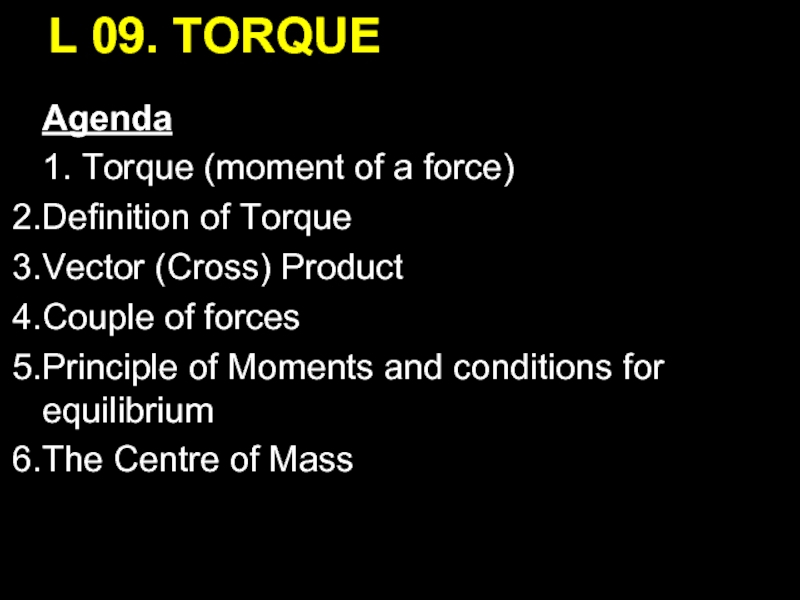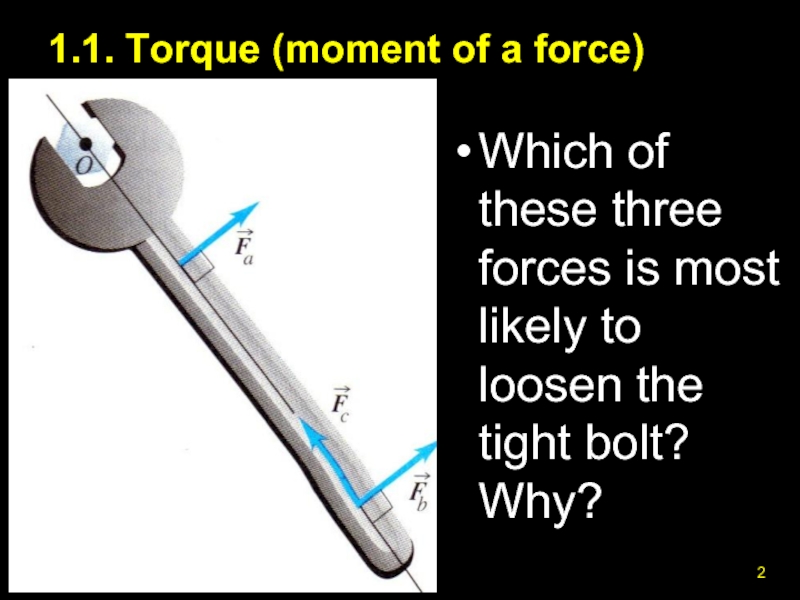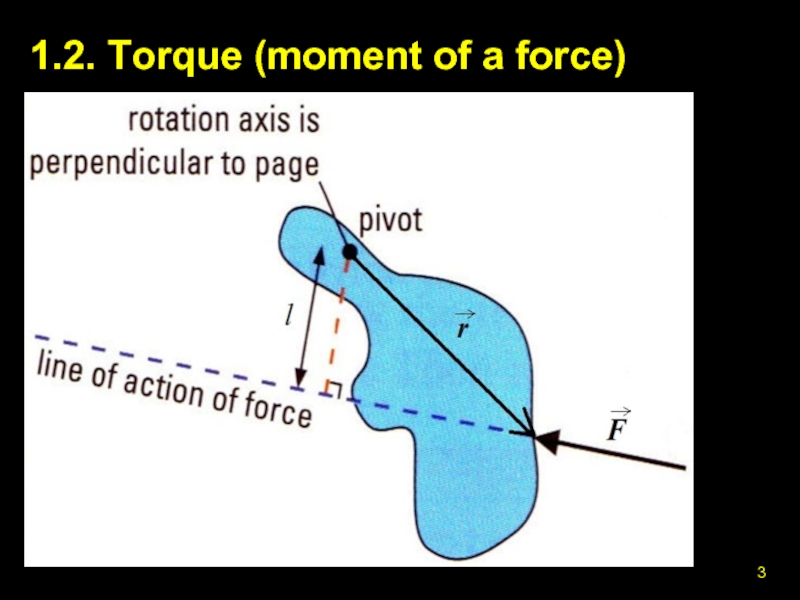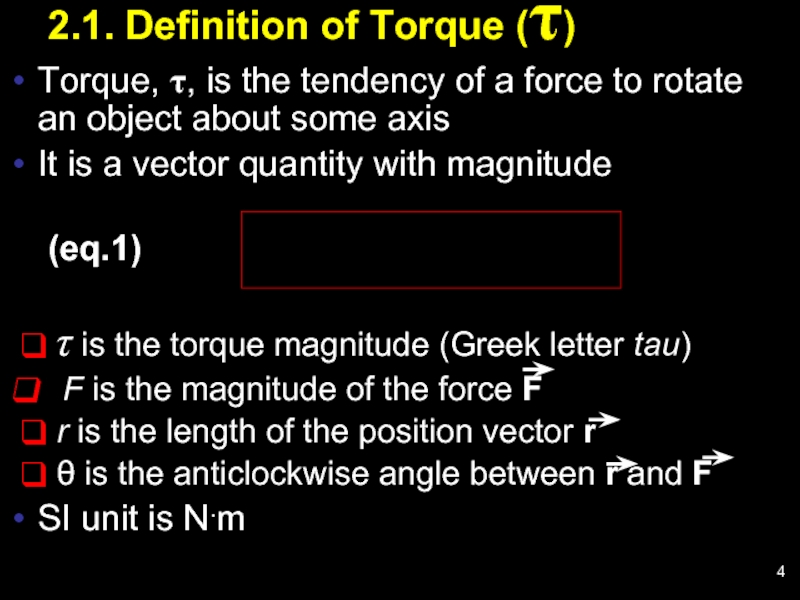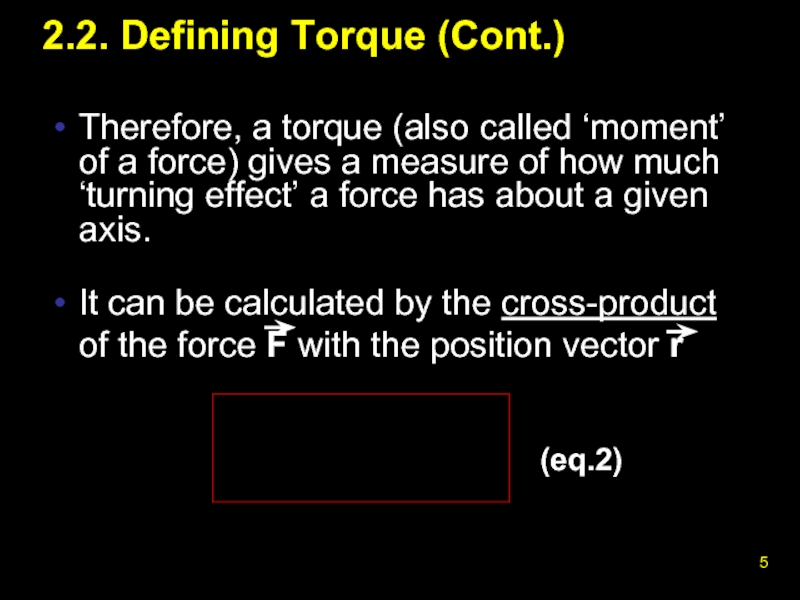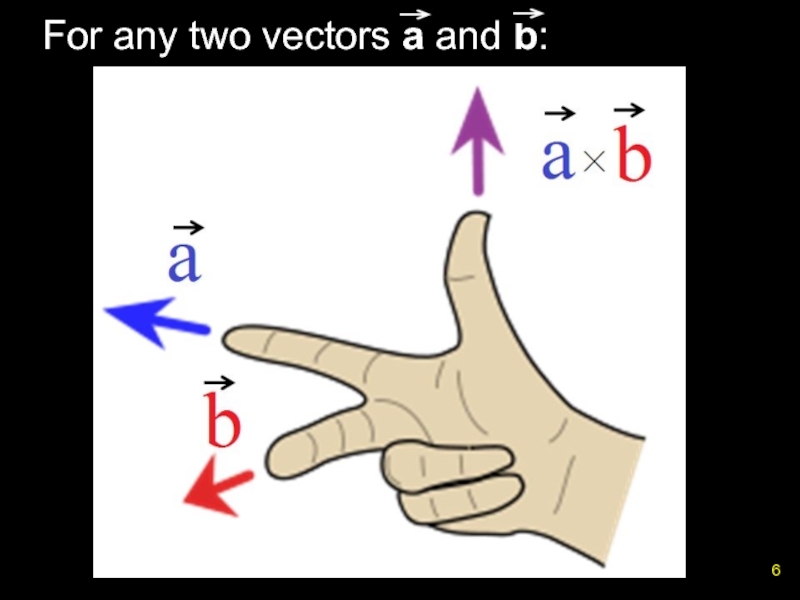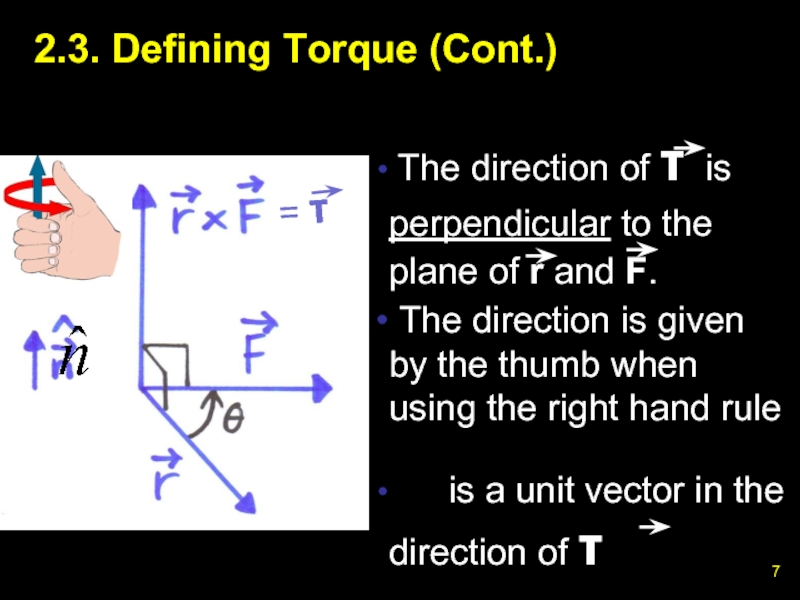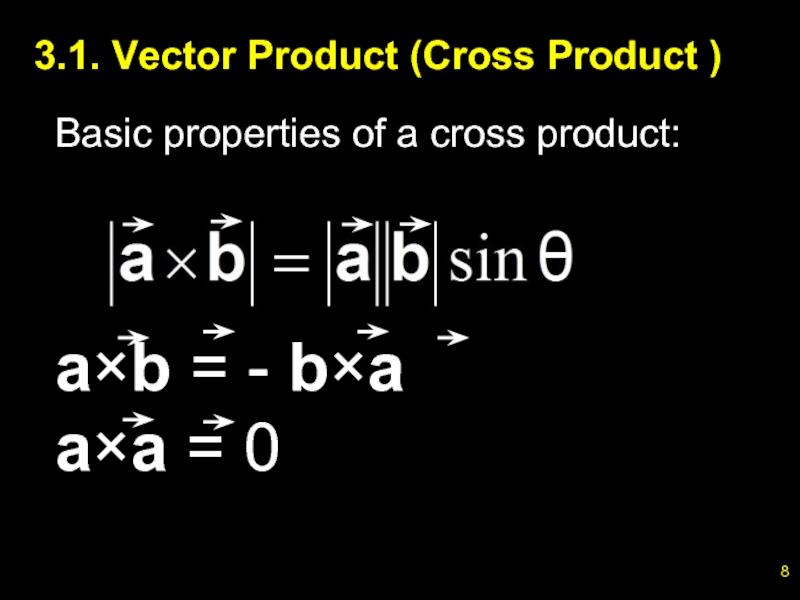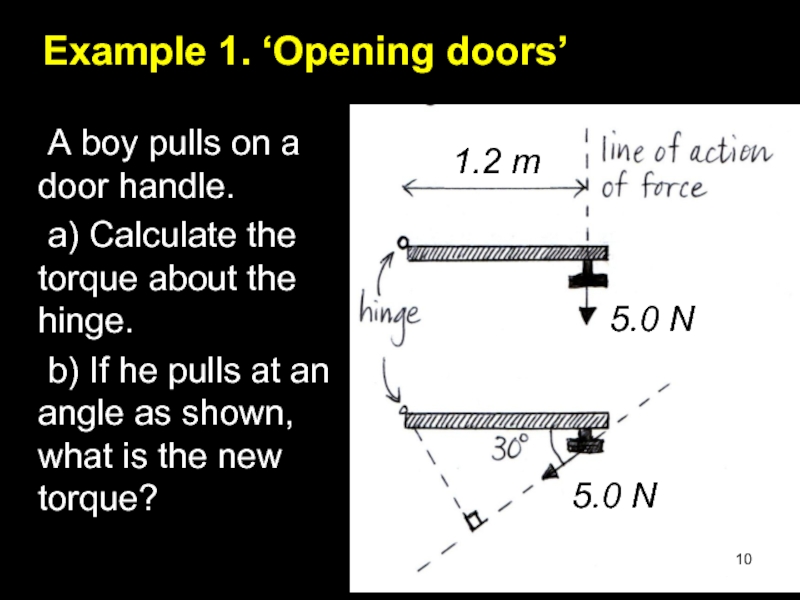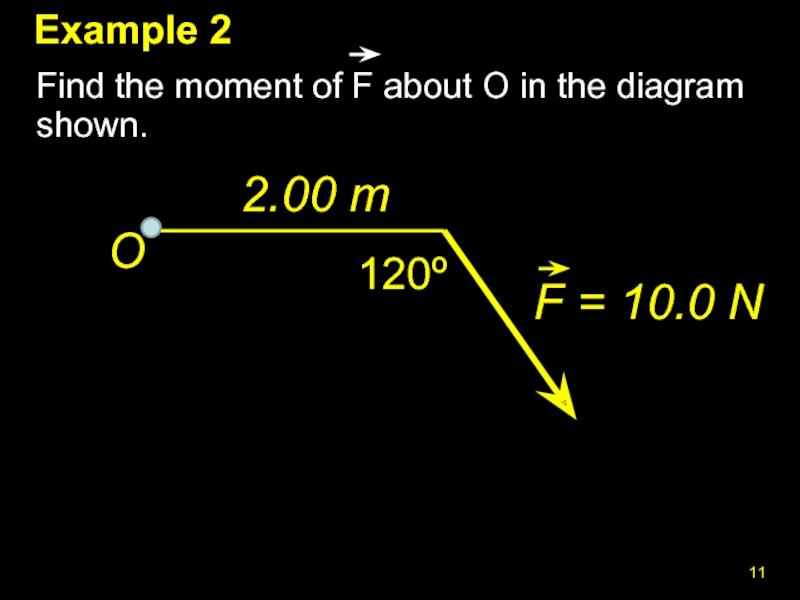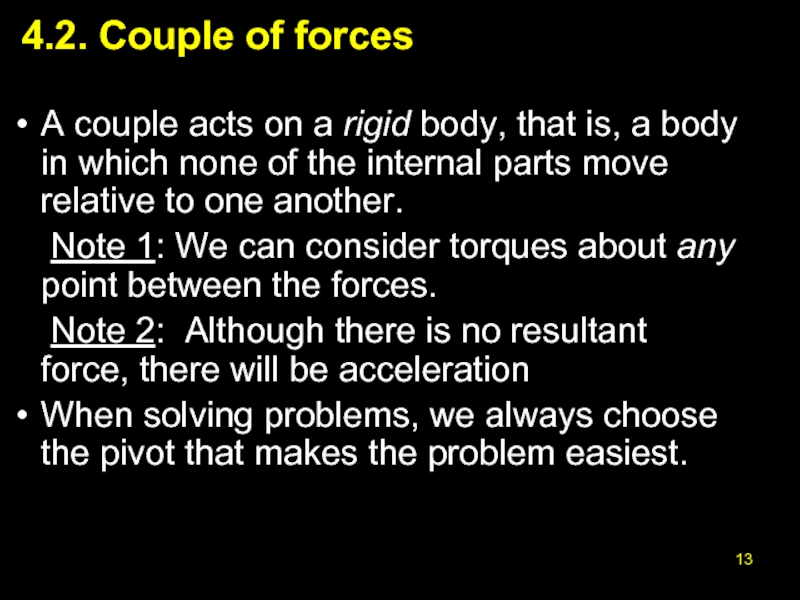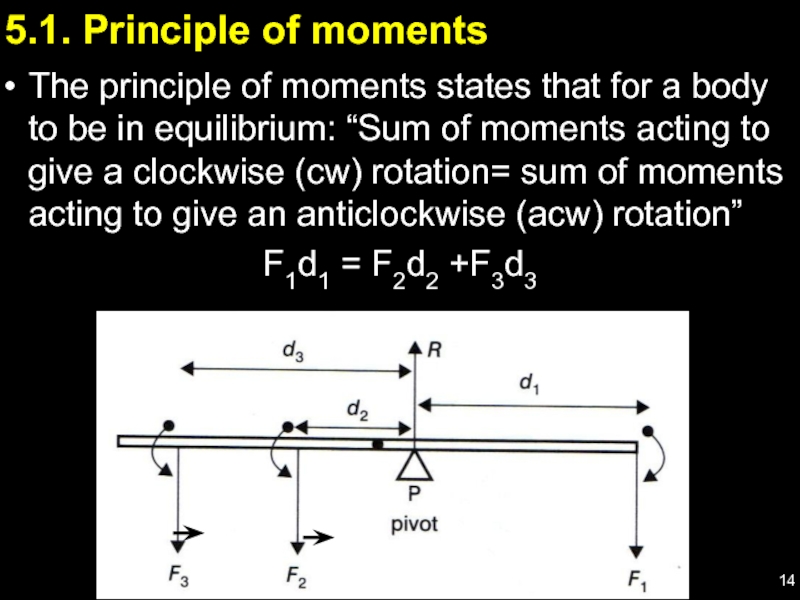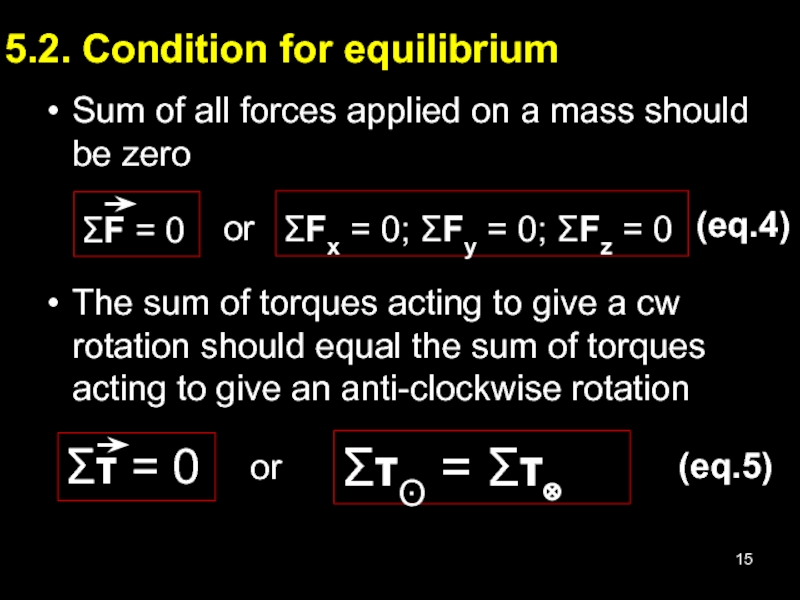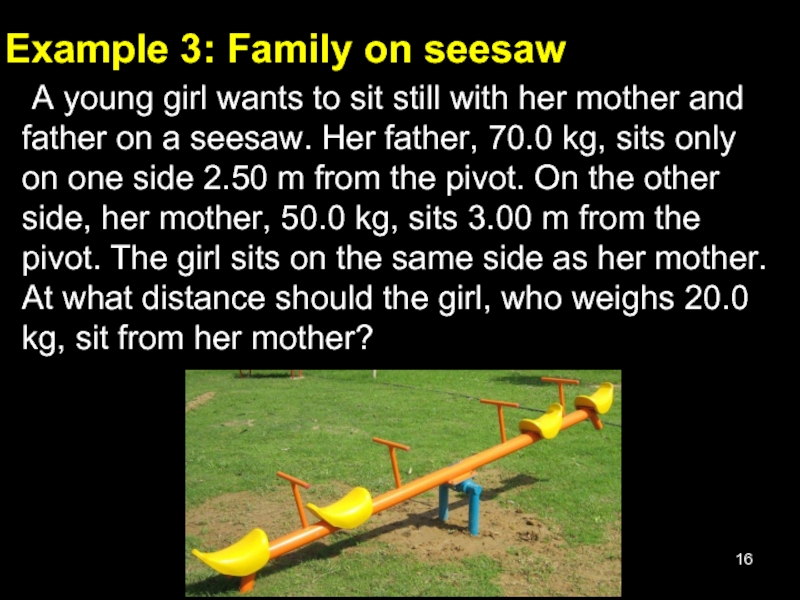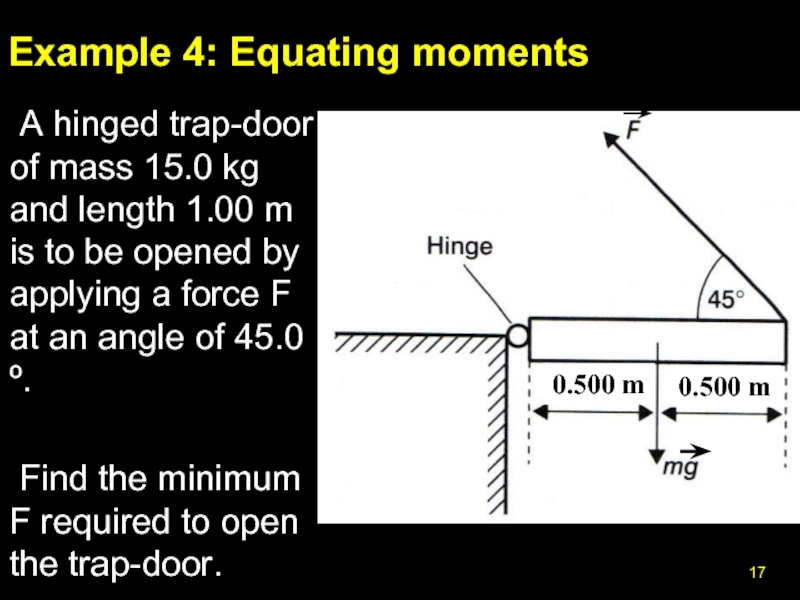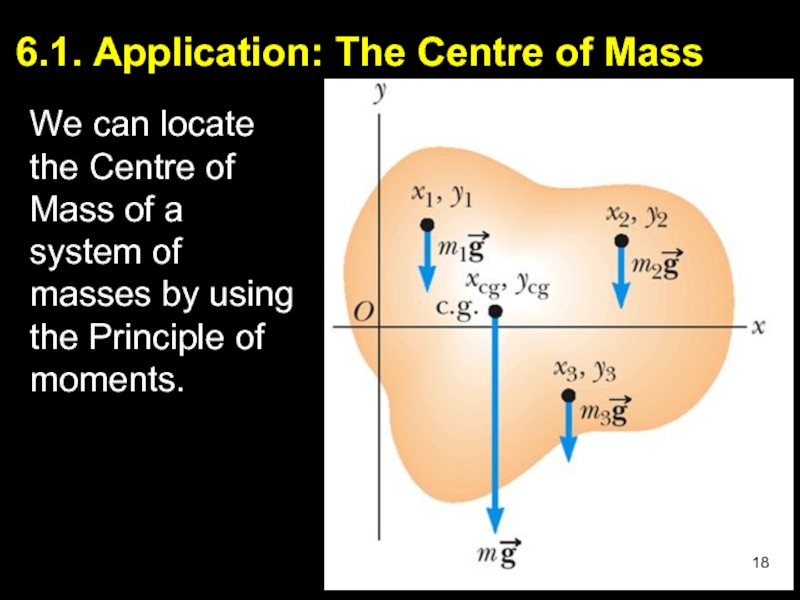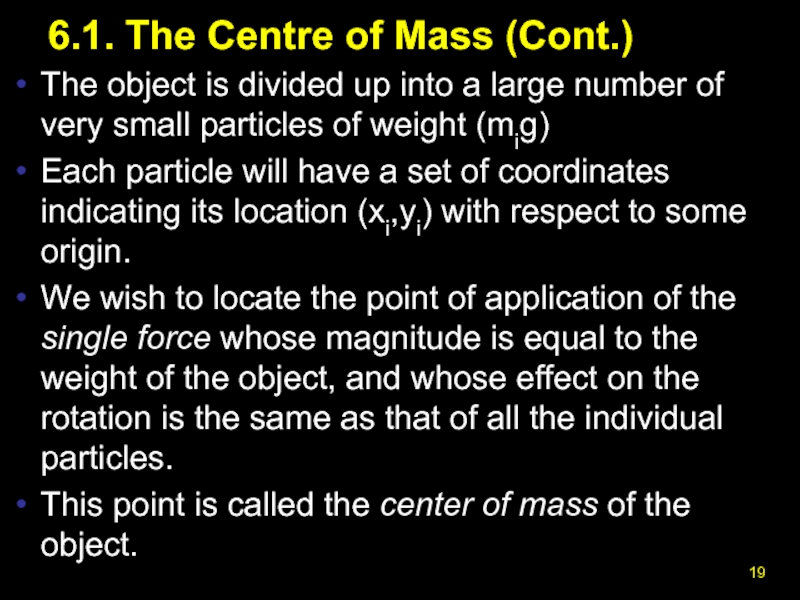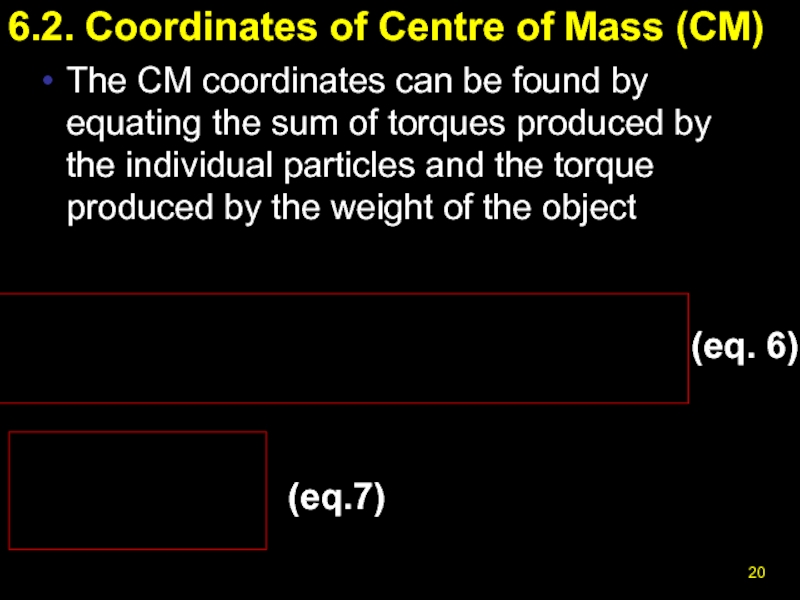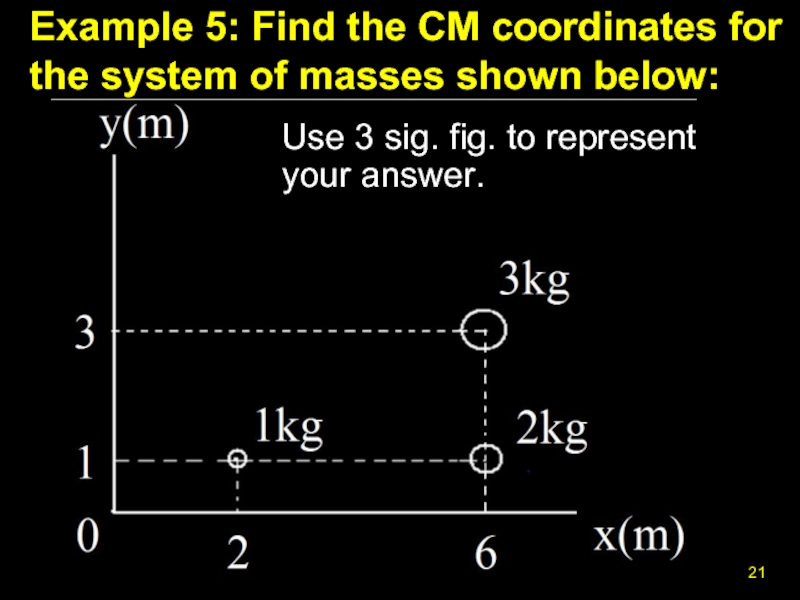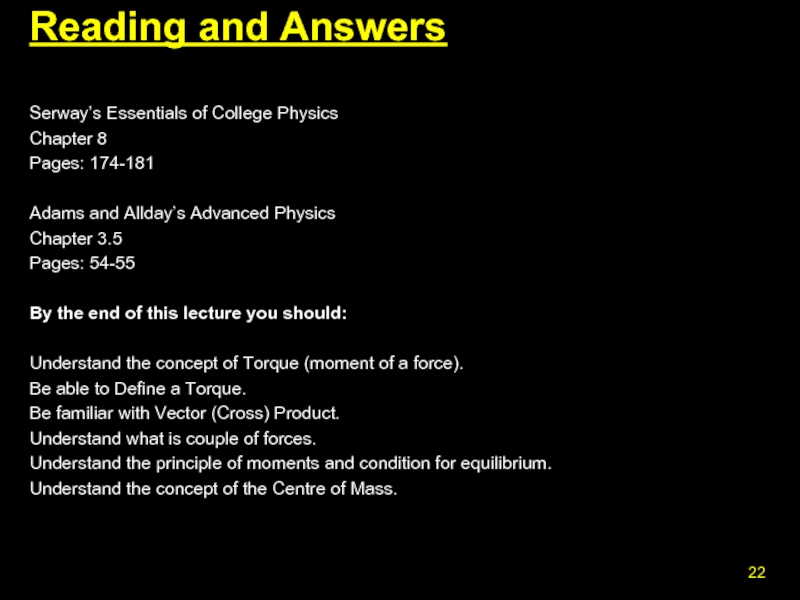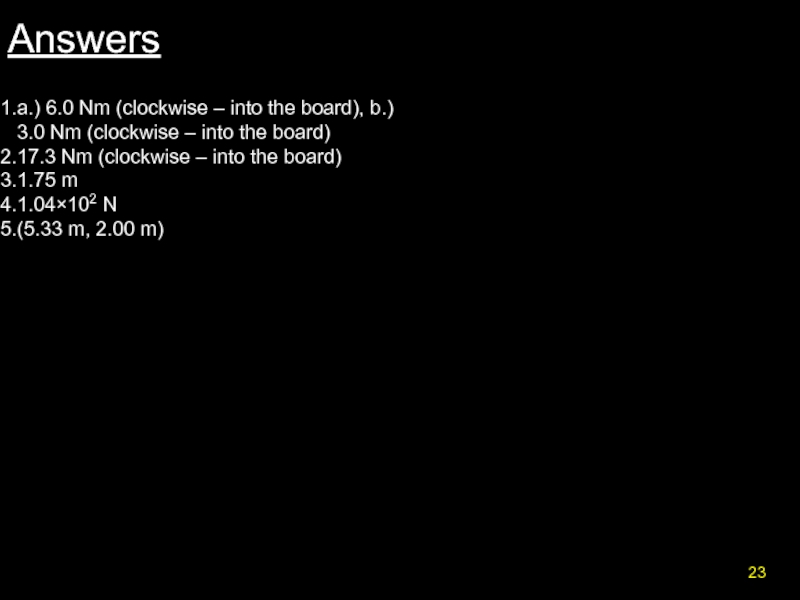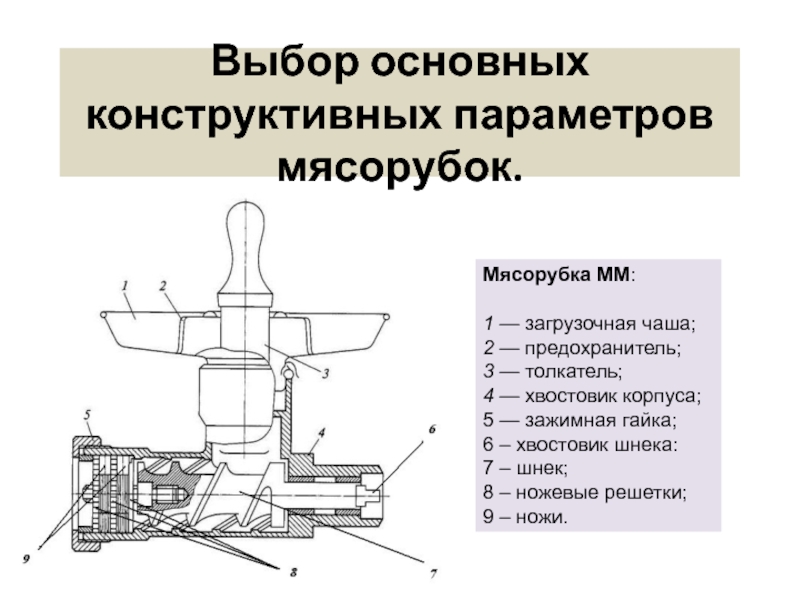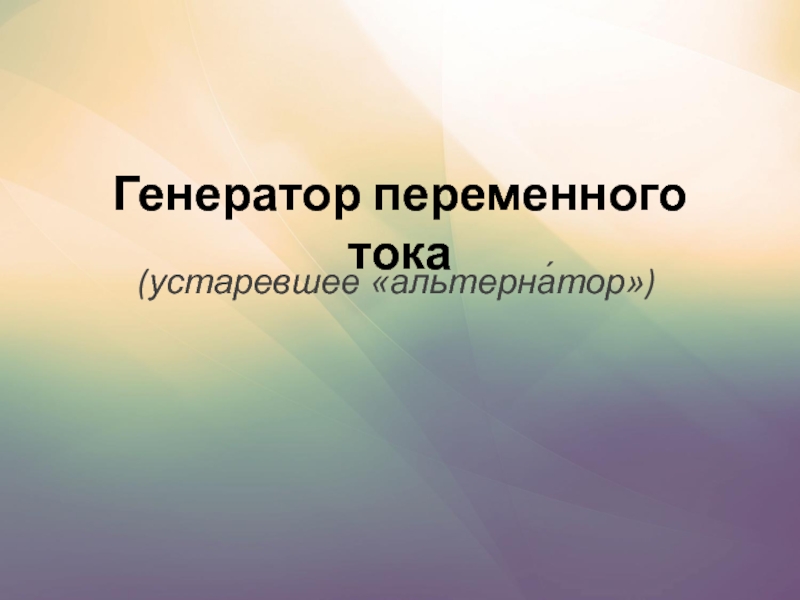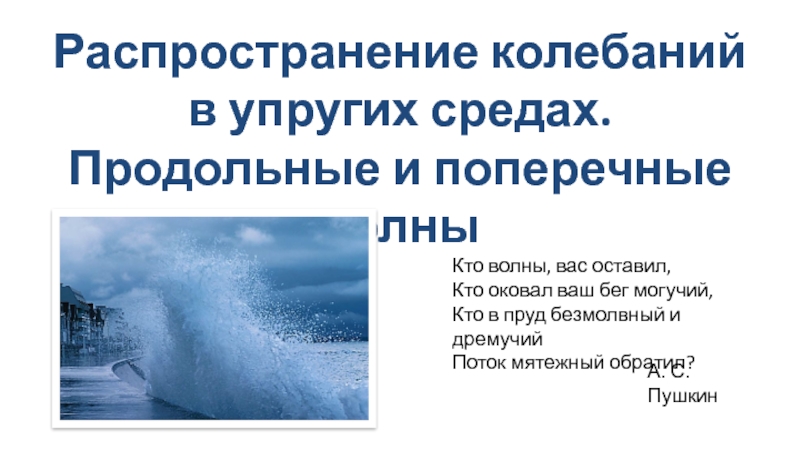- Главная
- Разное
- Дизайн
- Бизнес и предпринимательство
- Аналитика
- Образование
- Развлечения
- Красота и здоровье
- Финансы
- Государство
- Путешествия
- Спорт
- Недвижимость
- Армия
- Графика
- Культурология
- Еда и кулинария
- Лингвистика
- Английский язык
- Астрономия
- Алгебра
- Биология
- География
- Детские презентации
- Информатика
- История
- Литература
- Маркетинг
- Математика
- Медицина
- Менеджмент
- Музыка
- МХК
- Немецкий язык
- ОБЖ
- Обществознание
- Окружающий мир
- Педагогика
- Русский язык
- Технология
- Физика
- Философия
- Химия
- Шаблоны, картинки для презентаций
- Экология
- Экономика
- Юриспруденция
L09 - Torques презентация
Содержание
- 1. L09 - Torques
- 2. 1.1. Torque (moment of a force) Which
- 3. 1.2. Torque (moment of a force)
- 4. 2.1. Definition of Torque (τ) Torque, τ,
- 5. 2.2. Defining Torque (Cont.) Therefore, a
- 6. For any two vectors a and b:
- 7. 2.3. Defining Torque (Cont.) The direction
- 8. 3.1. Vector Product (Cross Product ) Basic
- 9. a×b = (z2 y1 –
- 10. Example 1. ‘Opening doors’ A boy pulls
- 11. Example 2 Find the moment of
- 12. 4.1. Couple of forces A couple is
- 13. 4.2. Couple of forces A couple acts
- 14. 5.1. Principle of moments The principle of
- 15. 5.2. Condition for equilibrium Sum of all
- 16. Example 3: Family on seesaw A young
- 17. Example 4: Equating moments A hinged trap-door
- 18. 6.1. Application: The Centre of Mass We
- 19. 6.1. The Centre of Mass (Cont.) The
- 20. 6.2. Coordinates of Centre of Mass (CM)
- 21. Example 5: Find the CM coordinates for
- 22. Reading and Answers Serway’s Essentials of College
- 23. Answers a.) 6.0 Nm (clockwise – into
Слайд 1
L 09. TORQUE
Agenda
1. Torque (moment of a force)
Definition of Torque
Vector
Couple of forces
Principle of Moments and conditions for equilibrium
The Centre of Mass
Слайд 21.1. Torque (moment of a force)
Which of these three forces is
Слайд 42.1. Definition of Torque (τ)
Torque, τ, is the tendency of a
It is a vector quantity with magnitude
(eq.1)
τ is the torque magnitude (Greek letter tau)
F is the magnitude of the force F
r is the length of the position vector r
θ is the anticlockwise angle between r and F
SI unit is N.m
Слайд 52.2. Defining Torque (Cont.)
Therefore, a torque (also called ‘moment’ of a
It can be calculated by the cross-product of the force F with the position vector r
(eq.2)
Слайд 72.3. Defining Torque (Cont.)
The direction of τ is
perpendicular to
The direction is given by the thumb when using the right hand rule
is a unit vector in the direction of τ
= τ
Слайд 9
a×b = (z2 y1 – z1 y2)i + (x2z1 – z2x1)j
3.2. Vector Product (Cross Product )
(eq.3)
i×j = k (also j×i = - k)
j×k = i (also k×j = - i)
k×i = j (also i×k = - j)
If: a = x1i + y1j + z1k and b = x2i + y2j + z2k
Слайд 10Example 1. ‘Opening doors’
A boy pulls on a door handle.
a)
b) If he pulls at an angle as shown, what is the new torque?
5.0 N
5.0 N
1.2 m
10
Слайд 124.1. Couple of forces
A couple is a special case of a
Слайд 134.2. Couple of forces
A couple acts on a rigid body, that
Note 1: We can consider torques about any point between the forces.
Note 2: Although there is no resultant force, there will be acceleration
When solving problems, we always choose the pivot that makes the problem easiest.
Слайд 145.1. Principle of moments
The principle of moments states that for a
F1d1 = F2d2 +F3d3
Слайд 155.2. Condition for equilibrium
Sum of all forces applied on a mass
The sum of torques acting to give a cw rotation should equal the sum of torques acting to give an anti-clockwise rotation
ΣF = 0
Στ = 0
(eq.5)
ΣFx = 0; ΣFy = 0; ΣFz = 0
(eq.4)
or
or
Στʘ = Στ⊗
Слайд 16Example 3: Family on seesaw
A young girl wants to sit still
Слайд 17Example 4: Equating moments
A hinged trap-door of mass 15.0 kg and
Find the minimum F required to open the trap-door.
0.500 m
0.500 m
Слайд 186.1. Application: The Centre of Mass
We can locate the Centre of
0.500 m
0.500 m
Слайд 196.1. The Centre of Mass (Cont.)
The object is divided up into
Each particle will have a set of coordinates indicating its location (xi,yi) with respect to some origin.
We wish to locate the point of application of the single force whose magnitude is equal to the weight of the object, and whose effect on the rotation is the same as that of all the individual particles.
This point is called the center of mass of the object.
Слайд 206.2. Coordinates of Centre of Mass (CM)
The CM coordinates can be
(eq. 6)
(eq.7)
Слайд 21Example 5: Find the CM coordinates for the system of masses
Use 3 sig. fig. to represent your answer.
Слайд 22Reading and Answers
Serway’s Essentials of College Physics
Chapter 8
Pages: 174-181
Adams and
Chapter 3.5
Pages: 54-55
By the end of this lecture you should:
Understand the concept of Torque (moment of a force).
Be able to Define a Torque.
Be familiar with Vector (Cross) Product.
Understand what is couple of forces.
Understand the principle of moments and condition for equilibrium.
Understand the concept of the Centre of Mass.
Слайд 23Answers
a.) 6.0 Nm (clockwise – into the board), b.) 3.0 Nm
17.3 Nm (clockwise – into the board)
1.75 m
1.04×102 N
(5.33 m, 2.00 m)
